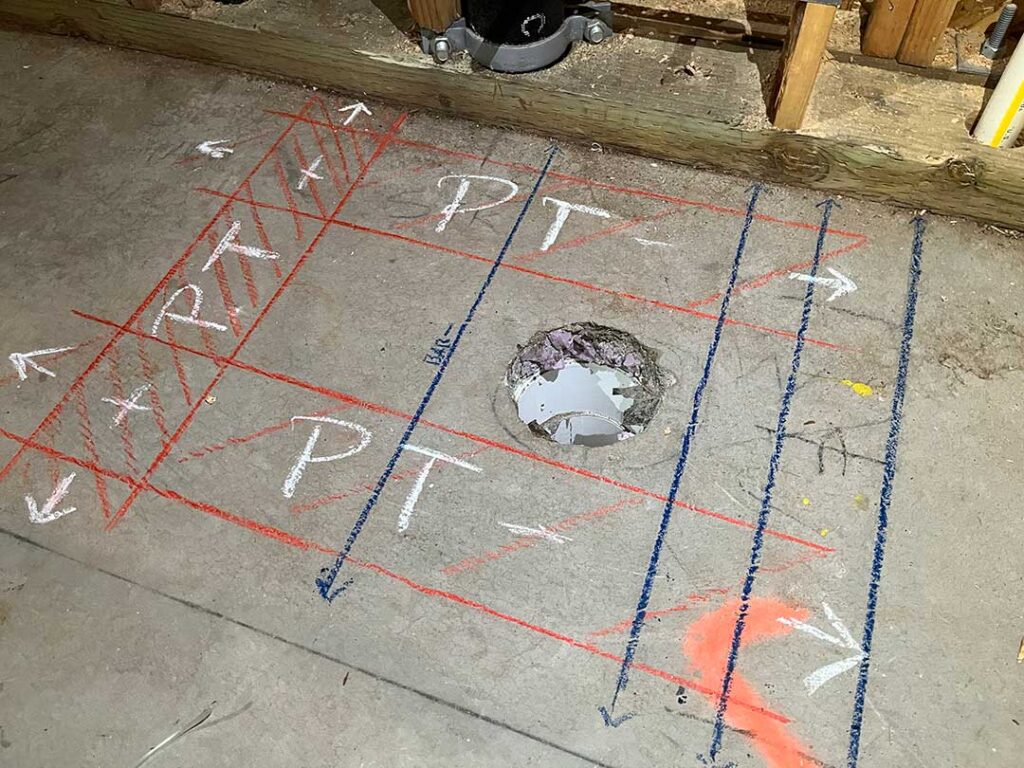The Importance of Exact Concrete Scanning in Detecting Underground Hazards
In the realm of construction and framework advancement, the importance of precise concrete scanning can not be overemphasized. Underneath the seemingly solid ground lie intricate networks of energies, pipelines, and various other subsurface frameworks that are typically invisible to the nude eye. The capability to accurately find and map these underground threats is not simply a matter of ease however an essential facet of making sure the safety of both building and construction workers and the integrity of the job itself. By deploying innovative scanning innovations and techniques, experts can reveal covert dangers, stop pricey damages, and ultimately pave the means for smoother and much safer construction undertakings.
Advanced Scanning Technologies for Detection
Innovative radar systems are revolutionizing the field of underground detection by supplying unrivaled precision and effectiveness. These sophisticated scanning modern technologies use ground-penetrating radar (GPR) to develop thorough photos of subsurface structures, offering insights into what lies beneath the surface with remarkable quality. By discharging high-frequency pulses right into the ground and gauging the representations, radar systems can recognize variants in material structure and discover underground risks such as cables, spaces, and pipes.
One of the key benefits of these innovative radar systems is their non-invasive nature, enabling thorough examinations without creating damage to the existing structures. This not just makes sure the security of the surrounding environment but also minimizes the requirement for costly repairs or disturbances to continuous construction tasks. Furthermore, the real-time data given by these scanning technologies makes it possible for quick decision-making and enhances total job performance.
Value of Subsurface Mapping

Exact subsurface mapping aids in preventing costly problems to existing underground framework, lowering the danger of accidents, and preserving project timelines. It allows task supervisors to make educated choices regarding website preparation, devices release, and source allocation. Furthermore, subsurface mapping enables much better coordination amongst various groups working with a project and helps in following regulative needs related to underground utility detection.
Mitigating Threats in Construction Tasks
Reliable risk mitigation techniques are crucial for guaranteeing the success and security of building tasks. One vital aspect of mitigating risks in building jobs is complete preparation and evaluation at the first phases.
In addition, developing clear interaction channels among all job stakeholders and guaranteeing strict adherence to safety methods are important components of threat mitigation. By proactively implementing durable threat reduction methods, construction tasks can lessen delays, expense overruns, and safety cases, eventually leading to effective job results.

Preventing Pricey Problems and Delays
To reduce financial losses and task obstacles, efficient strategies have to be implemented to stop expensive damages and hold-ups in other building tasks. One crucial way to attain this is by performing extensive concrete scanning before any type of excavation work begins. By making use of innovative scanning innovations such as ground-penetrating radar (GPR) and electromagnetic induction, construction teams can properly find below ground risks like rebar, conduits, and other energies. Determining these obstructions early on aids in preparing the job layout extra effectively and avoiding potential problems during excavation.
Additionally, buying training programs for construction workers on the importance of concrete scanning and secure excavation techniques can substantially decrease the threat of delays and accidents. Clear communication networks between job supervisors, engineers, and on-site workers are additionally necessary to ensure that everybody understands the potential dangers and follows the essential protocols to stop pricey damages. By prioritizing positive actions like concrete scanning and promoting a culture of security and recognition, construction projects can lessen the economic sites impact of unexpected underground blockages and stay clear of pricey delays.
Ensuring Safety of On-Site Worker
By focusing on positive actions such as comprehensive training programs and clear communication channels, building jobs can make sure the safety and security of on-site employees amid the potential risks discovered via concrete scanning. Correct training outfits employees with the expertise and abilities required to browse building and construction websites securely, specifically when hazards are identified through scanning processes. Training should cover hazard recognition, emergency situation treatments, and the correct application of individual safety tools to minimize threats successfully.
Furthermore, establishing clear communication channels is essential for disseminating information about identified threats without delay. This makes certain that all on-site personnel recognize potential risks and can take necessary safety measures to avoid accidents. Normal safety and security instructions, toolbox talks, and consistent updates pertaining to scanning results help maintain everybody educated and positive in keeping a risk-free working setting.
In addition, carrying out strict adherence to safety and security procedures and policies, performing routine security audits, and cultivating a culture of safety and security consciousness amongst workers are vital parts in guaranteeing the health of on-site workers throughout building tasks - RainierGPR Concrete Scanning. Positive safety measures not just safeguard employees from harm however additionally contribute to the total success and efficiency of the task
Conclusion
Using sophisticated scanning modern technologies and subsurface mapping assists minimize threats in construction jobs, stopping expensive problems and delays. It is important for construction business to prioritize the usage of exact scanning approaches to decrease possible dangers and guarantee a smooth building process.
By proactively applying durable danger mitigation approaches, building and construction jobs can lessen delays, price overruns, and security events, ultimately leading to effective job outcomes. - RainierGPR Concrete Scanning
To decrease monetary losses and web project setbacks, reliable techniques must be applied to avoid expensive damages and hold-ups in building tasks. By prioritizing aggressive procedures like concrete scanning and promoting a society of safety and recognition, building tasks can reduce the economic effect of unanticipated underground obstructions and avoid pricey hold-ups.
By prioritizing aggressive measures such as thorough training programs and clear communication networks, building tasks can make certain the security of on-site employees amid the prospective dangers found via concrete scanning. Making use of advanced scanning modern technologies and subsurface mapping assists minimize risks in construction jobs, stopping pricey problems and hold-ups.